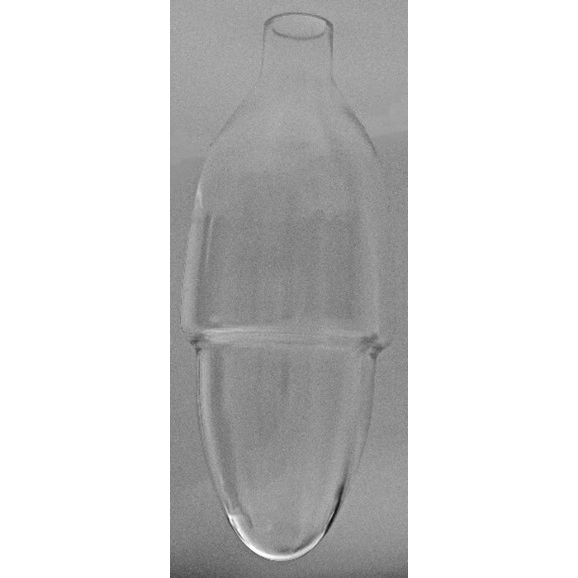EU General Court Upholds Refusal of 3D Bottle Shape Trade Mark

Drink deep! In the latest EU General Court decision involving bottle shapes and their registrability as trade marks, the Court has held that even where shape marks are distinctive, they will not qualify for protection if their essential elements are functional. This is the case regardless of how aesthetic or unusual those elements are. Gerard Kelly, Head of Intellectual Property considers the key learnings from the decision for brand owners.
Contrary to the recent decision of the EUIPO Fifth Board of Appeal in holding that the shape of an Absolut vodka bottle is sufficiently distinctive to qualify for trade mark protection, the General Court of the EU has more recently refused trade mark protection for a similar 3D mark representing in the shape of a bottle. In doing so, the General Court held that even where a 3D trade mark application is distinctive, it will not qualify for trade mark protection where the shape of the mark performs technical functions. We analyse the decision and its impact.
Background
In December 2015, the German company, Wajos GmbH (Wajos) applied for the following 3D shape mark as a European Union Trade Mark (EUTM):

The application sought protection for a wide range of food and beverages in Classes 29, 30, 32 and 33 including:
- ‘Beverages consisting primarily of tea’
- ‘Beverages consisting primarily of cocoa’
- ‘Non alcoholic beverages’, and
- ‘Alcoholic fruit drinks.
The EUIPO Examiner initially refused the application on the basis that it lacked distinctiveness. Wajos appealed and the EUIPO Fifth Board of Appeal agreed with the Examiner. Wajos then appealed to the General Court.
General Court first decision and Board of Appeal second decision
By decision dated 3 October 2018, the General Court annulled the decision of the EUIPO First Board of Appeal. The Court held that the combination of elements constituting the mark was ‘special’ and could not be regarded as entirely ordinary. The combination, the Court noted, gives the container “a particular appearance that distinguishes it from bottles commonly available on the market, also taking into account the overall aesthetic result, since consumers are not used to containers that have a distinctively curved shape in the middle.” Subsequently, the EUIPO Second Board of Appeal reopened the proceedings, and this time rejected the application for the majority of the goods applied for in accordance with Article 7(1)(e)(ii) of the EU Trade Mark Regulation (EUTMR). That provision provides that signs cannot be registered if they consist exclusively of the shape or another characteristic of goods, which is necessary to obtain a technical result. Wajos appealed this decision to the EU General Court.
General Court second decision
By judgment dated 5 July 2023, the General Court dismissed Wajos’ appeal. It held firstly that the Board of Appeal was not precluded from reviewing another absolute ground for refusal after the General Court had annulled the Board of Appeal’s first decision. This is because, the Court noted, each of the absolute grounds for refusal of a trade mark under Article 7(1) EUTMR apply independently of one another. When the proceedings were therefore reopened, the Court held that the Board of Appeal was required to assess whether any other ground for refusal applied. On the question of registrability of the mark under Article 7(1)(e) EUTMR, namely whether the shape was exclusively necessary to obtain a technical result, the Court agreed with the Board of Appeal that the following essential features of the sign do perform technical functions:
- A tapered inflow and outflow area, which allows or facilitates the appropriate pouring out of the contents. On the other hand, it prevents or makes it more difficult for the product to leak or spill when the container is moved, even with non-liquid products, except for those that are usually removed with a spoon or other utensil that requires a wider opening.
- A bulgy main part, which tapers towards the bottom and which allows the goods for which registration is sought to be accommodated, and
- A beading, which separates the broader upper part from the narrower lower part of the container.
Whilst Wajos accepted the technical function of those elements of the sign, it argued that the Board of Appeal failed to recognise that the beading does not have a purely technical function but rather combines the upper and lower shapes of the mark applied for in an unusual way. As a result, Wajos argued an aesthetic value on the sign was conferred. In other words, the shape was not exclusively necessary to obtain a technical result. The General Court rejected this argument. Similarly, the Court dismissed Wajos’ argument that the combination of individual design elements of the container creates an overall aesthetic value that is not purely functional. The Court ultimately concluded that the EUIPO Board of Appeal was correct to hold that the sign was incapable of registration in accordance with Article 7(1)(e) EUTMR.
Comment
The decision serves as a reminder to brand owners of the difficulties and challenges associated with registering 3D trade marks, and in particular, shape marks, where the shape may have a functional aspect. Brand owners should bear in mind that even where a shape mark is deemed to be distinctive and to depart significantly from the norms and customs of the sector concerned, it will not qualify for trade mark protection if all of its essential elements are functional, regardless of how aesthetic or unusual those elements are. Whilst it is clear that this is a high bar to meet, the purpose behind Article 7(1)(e) EUTMR is to prevent trade mark owners from acquiring a monopoly over functional shapes and products which should be common and easily accessible in the market.
For more information, contact a member of our Intellectual Property Team.
The content of this article is provided for information purposes only and does not constitute legal or other advice.
Share this:



